In the modern era of technology, the significance of site quality cannot be overstated for businesses aiming to build a strong online footprint, draw in prospective customers, and enhance sales. However, what precisely constitutes a website of superior quality?
A recent study sheds light on the importance of investing in site quality and brand awareness for retailers looking to increase organic clicks and improve their SEO strategy.
In this article, we explore the study’s findings and delve into the various aspects that contribute to a high-quality website, including navigation, interface design, content, and user experience.
We also discuss the benefits a quality website can offer businesses, such as increased customer engagement, improved findability, and enhanced brand reputation.
What is Organic Click Through Rate?
Organic Click Through Rate (CTR) is pretty much what it sounds like if you think about the organic section at a grocery store—everything there is naturally occurring without any added artificial stuff.
In the digital marketing world, “organic” refers to search results that appear due to their relevance to the search terms, not because they were paid for. So, organic CTR is the percentage of people who click on these natural search results after seeing them.
Let’s say you Google “best chocolate chip cookies near me.” The search engine serves up a list of websites. If your website shows up as the third organic result and 100 people saw that result, but 5 people clicked on it to read your mind-blowing cookie recipes, your organic CTR would be 5%.
It’s a handy metric because it gives you a clue about how well your site draws people in naturally, without any advertising magic.
Uncovering the Drivers of Organic Clicks
A study focusing on identifying drivers of organic clicks for the top 759 retailers from over 12,000 search terms and 2 million users shows a retailer’s investments in factors such as the quality and brand awareness of its site increase organic clicks through both a direct and indirect effect .
- In Direct effect, Higher quality of online retailers leads to more consumers clicking its link over a competitor’s link in organic results.
- In Indirect effect, Search engines tend to place higher quality sites in better positions, resulting in additional clicks because consumers tend to click links in more favorable positions.
Investments in the quality and brand awareness of a site should be included as part of an SEO strategy for retailers.
Improvements in brand equity lead to increased clicks for all relevant searches, while rank effects are keyword-specific.
Improving site quality and consumer awareness improves an online retailer’s brand equity, leading to spillover benefits in other channels such as price comparison sites, direct visits, and physical stores.
The impact of brand equity is not term specific, so a marginal improvement in a retailer’s brand equity has a larger direct effect on organic clicks than SEO efforts resulting in a marginal improvement in the position associated with a particular search term.
Really: What is quality?
Quality in websites is determined by diverse factors such as navigation, interface aspects, legibility, performance, correct operation, and conformity with standards .
Also, the quality of content can impact online findability and rankings .
Website design entails a broad set of activities that address various aspects such as information design (classifying and grouping content items), navigation design (facilitating interaction with the information structure), graphic design (visual presentation), and experience design (affects overall user experience) .
A high-quality website offers numerous benefits to businesses that can help them establish a strong online presence, improve customer engagement, and boost sales .
Firstly, having a well-designed and user-friendly website can significantly reduce the marketing effort required to attract potential customers. A website optimized for search engines can rank higher in search results and attract more organic traffic, reducing the need for expensive advertising campaigns.
Secondly, a quality website can work around the clock to promote a business, offering customers access to products and services outside regular business hours. It can significantly increase the working hours of a business and make it more convenient for customers to shop online.
Thirdly, a website that is easy to navigate and offers a smooth and hassle-free customer experience can encourage customers to return and make repeat purchases. A website optimized for mobile devices has fast loading times and provides relevant and useful content that can help establish a strong brand reputation and foster customer loyalty.
What are some best practices for improving site quality?
Making your website better is important for getting more people to visit and click on it. Here are some tips to help you improve your website:
- Make your content match what people are searching for: Organize your website and use keywords that are relevant and descriptive. Create valuable and high-quality content, get good websites to link to yours, make sure your website loads quickly and works well on mobile devices, and keep your website up to date.
- Make your page titles and descriptions interesting: Write catchy and accurate titles and descriptions that make people want to click on your website when they see it in search results. Use keywords that are relevant to the page and give a short summary of what people will find.
- Make your website easy to use: Use white space to make things easier to read, make your website load quickly, use attractive buttons and links, make sure links stand out from the regular text, use bullet points to organize important information, use images wisely, have well-designed and clear headings, keep your website consistent, fix any broken links, and make sure your website works well on mobile devices.
- Make your images load quickly: Reduce the number of things your website needs to load by compressing images and making their file sizes smaller. Also, make sure CSS and JavaScript files are minimized, use browser caching, use a content delivery network (CDN), use a fast hosting service, and only load images and videos when people scroll to them.
- Link to other pages on your website: Create links on your website that go to other pages on your website. This helps people navigate your website and makes it easier for search engines to understand what your website is about.
- Ask people for feedback: Get feedback from people who visit your website through surveys, reviews, and testing. Use their feedback to make your website better and fix any problems or issues they find.
- Show that your website is trustworthy: Prove that your website and the content on it can be trusted. Use testimonials, be transparent about your business, use security seals, and create content that shows you are an expert in your field.
- Check your website regularly: Regularly check your website for technical issues, broken links, and other problems that can make your website worse. Use tools like Google Search Console to find and fix these issues.
- Share ideas and experiences: Create a network where people can share their ideas and experiences. This can help everyone learn and improve their websites.
- Collect and evaluate data: Collect data that shows how well your website is doing. This can help you track your progress and find areas where you can make improvements.
By following these tips, you can make your website better, give people a better experience, and get more organic clicks. Remember that improving your website is an ongoing process that requires you to keep an eye on it and make changes as needed .
3 Things to Increasing Organic Click Through Rate!
Absolutely, these three are solid gold for boosting your organic CTR!
- Title Tags: Think of these as the headlines of the internet. A crisp, clear title between 40 and 60 characters not only fits neatly in search engine results but also packs enough punch to catch the eye. This is the sweet spot where you can convey enough about your content to pique interest without overwhelming the reader with too much text.
- Longer Keywords: These are often called “long-tail keywords” and they’re like fishing with a precision lure. They target very specific interests and questions people have. Because they’re more specific, they face less competition and attract users who are looking for exactly what you offer. This specificity can significantly increase your CTR because your content directly addresses what these users are searching for.
- Keyword-Rich URLs: URLs are more important than many think. Including relevant keywords in your URL helps users quickly understand what your page is about even before they click on it. It also reinforces the relevancy of your site to the search engines, which can help your rankings. Just keep it readable and avoid stuffing it with too many keywords—it should still feel natural and easy to understand.
Put these three strategies to work, and you should see a nice uptick in how often people click through to your site from search results!
Conclusion
In conclusion, the findings of a recent study highlight the importance of investing in site quality and brand awareness for retailers looking to improve their SEO strategy and increase organic clicks.
A high-quality website involves various aspects, including navigation, interface design, content, and user experience.
By improving site quality and consumer awareness, retailers can enhance their brand equity and expertise spillover benefits in other channels such as price comparison sites, direct visits, and physical stores.
Furthermore, a quality website offers numerous advantages to businesses, such as improved findability, increased customer engagement, and enhanced brand reputation, which can ultimately boost sales and establish a strong online presence.
Therefore, investing in site quality should be a crucial part of any business’s digital marketing strategy.
Sources:
{11239602:4J46I5J2};{11239602:7DPMURN4};{11239602:E5J644GR};{11239602:G4DW7M77};{11239602:THACZ7BH};{11239602:7JK2XZ89}
default
asc
no
25910
%7B%22status%22%3A%22success%22%2C%22updateneeded%22%3Afalse%2C%22instance%22%3A%22zotpress-4833a888fc996e3a94d43358b3911e61%22%2C%22meta%22%3A%7B%22request_last%22%3A0%2C%22request_next%22%3A0%2C%22used_cache%22%3Atrue%7D%2C%22data%22%3A%5B%7B%22key%22%3A%227JK2XZ89%22%2C%22library%22%3A%7B%22id%22%3A11239602%7D%2C%22meta%22%3A%7B%22parsedDate%22%3A%222016-09-07%22%2C%22numChildren%22%3A0%7D%2C%22bib%22%3A%22%3Cdiv%20class%3D%5C%22csl-bib-body%5C%22%20style%3D%5C%22line-height%3A%201.35%3B%20%5C%22%3E%5Cn%20%20%3Cdiv%20class%3D%5C%22csl-entry%5C%22%20style%3D%5C%22clear%3A%20left%3B%20%5C%22%3E%5Cn%20%20%20%20%3Cdiv%20class%3D%5C%22csl-left-margin%5C%22%20style%3D%5C%22float%3A%20left%3B%20padding-right%3A%200.5em%3B%20text-align%3A%20right%3B%20width%3A%201em%3B%5C%22%3E%5B1%5D%3C%5C%2Fdiv%3E%3Cdiv%20class%3D%5C%22csl-right-inline%5C%22%20style%3D%5C%22margin%3A%200%20.4em%200%201.5em%3B%5C%22%3EThe%20Most%20Effective%20Way%20to%20Improve%20Sitewide%20Quality%20and%20Rankings%20%28Most%20of%20the%20Time%29.%20Moz%202016.%20%3Ca%20href%3D%27https%3A%5C%2F%5C%2Fmoz.com%5C%2Fblog%5C%2Fmost-effective-way-to-improve-sitewide-quality-and-rankings%27%3Ehttps%3A%5C%2F%5C%2Fmoz.com%5C%2Fblog%5C%2Fmost-effective-way-to-improve-sitewide-quality-and-rankings%3C%5C%2Fa%3E%20%28accessed%20July%2018%2C%202023%29.%3C%5C%2Fdiv%3E%5Cn%20%20%3C%5C%2Fdiv%3E%5Cn%3C%5C%2Fdiv%3E%22%2C%22data%22%3A%7B%22itemType%22%3A%22webpage%22%2C%22title%22%3A%22The%20Most%20Effective%20Way%20to%20Improve%20Sitewide%20Quality%20and%20Rankings%20%28Most%20of%20the%20Time%29%22%2C%22creators%22%3A%5B%5D%2C%22abstractNote%22%3A%22How%20much%20dead%20weight%20is%20bringing%20your%20site%20down%20in%20rankings%3F%20Armed%20with%20compelling%20case%20study%20data%2C%20Everett%20Sizemore%20shares%20his%20single%20most%20effective%20and%20scaleable%20tactic%20for%20improving%20your%20site%27s%20overall%20level%20of%20quality%2C%20in%20most%20situations.%22%2C%22date%22%3A%222016-09-07%22%2C%22url%22%3A%22https%3A%5C%2F%5C%2Fmoz.com%5C%2Fblog%5C%2Fmost-effective-way-to-improve-sitewide-quality-and-rankings%22%2C%22language%22%3A%22en-US%22%2C%22collections%22%3A%5B%22IMP5CR4T%22%5D%2C%22dateModified%22%3A%222023-07-18T16%3A03%3A39Z%22%7D%7D%2C%7B%22key%22%3A%22THACZ7BH%22%2C%22library%22%3A%7B%22id%22%3A11239602%7D%2C%22meta%22%3A%7B%22creatorSummary%22%3A%22Cristea%22%2C%22parsedDate%22%3A%222020-04-10%22%2C%22numChildren%22%3A0%7D%2C%22bib%22%3A%22%3Cdiv%20class%3D%5C%22csl-bib-body%5C%22%20style%3D%5C%22line-height%3A%201.35%3B%20%5C%22%3E%5Cn%20%20%3Cdiv%20class%3D%5C%22csl-entry%5C%22%20style%3D%5C%22clear%3A%20left%3B%20%5C%22%3E%5Cn%20%20%20%20%3Cdiv%20class%3D%5C%22csl-left-margin%5C%22%20style%3D%5C%22float%3A%20left%3B%20padding-right%3A%200.5em%3B%20text-align%3A%20right%3B%20width%3A%201em%3B%5C%22%3E%5B1%5D%3C%5C%2Fdiv%3E%3Cdiv%20class%3D%5C%22csl-right-inline%5C%22%20style%3D%5C%22margin%3A%200%20.4em%200%201.5em%3B%5C%22%3ECristea%20M-A.%20Why%20a%20Quality%20Website%20is%20Essential%20to%20Your%20Business.%20Business%20Review%202020.%20%3Ca%20href%3D%27https%3A%5C%2F%5C%2Fbusiness-review.eu%5C%2Ftech%5C%2Fonline%5C%2Fwhy-a-quality-website-is-essential-to-your-business-209457%27%3Ehttps%3A%5C%2F%5C%2Fbusiness-review.eu%5C%2Ftech%5C%2Fonline%5C%2Fwhy-a-quality-website-is-essential-to-your-business-209457%3C%5C%2Fa%3E%20%28accessed%20March%2018%2C%202023%29.%3C%5C%2Fdiv%3E%5Cn%20%20%3C%5C%2Fdiv%3E%5Cn%3C%5C%2Fdiv%3E%22%2C%22data%22%3A%7B%22itemType%22%3A%22blogPost%22%2C%22title%22%3A%22Why%20a%20Quality%20Website%20is%20Essential%20to%20Your%20Business%22%2C%22creators%22%3A%5B%7B%22creatorType%22%3A%22author%22%2C%22firstName%22%3A%22Mihai-Alexandru%22%2C%22lastName%22%3A%22Cristea%22%7D%5D%2C%22abstractNote%22%3A%22Online%20-%20In%20today%5Cu2019s%20world%2C%20the%20majority%20of%20people%20use%20the%20internet%20for%20several%20things.%20Do%20you%20need%20an%20air%20conditioner%20cleaner%3F%20Looking%20for%20food%20delivery%3F%20Review%22%2C%22blogTitle%22%3A%22Business%20Review%22%2C%22date%22%3A%222020-04-10T12%3A39%3A51%2B00%3A00%22%2C%22url%22%3A%22https%3A%5C%2F%5C%2Fbusiness-review.eu%5C%2Ftech%5C%2Fonline%5C%2Fwhy-a-quality-website-is-essential-to-your-business-209457%22%2C%22language%22%3A%22ro%22%2C%22collections%22%3A%5B%22IMP5CR4T%22%5D%2C%22dateModified%22%3A%222023-03-18T08%3A26%3A13Z%22%7D%7D%2C%7B%22key%22%3A%22E5J644GR%22%2C%22library%22%3A%7B%22id%22%3A11239602%7D%2C%22meta%22%3A%7B%22creatorSummary%22%3A%22Cunningham%22%2C%22parsedDate%22%3A%222022-09-13%22%2C%22numChildren%22%3A0%7D%2C%22bib%22%3A%22%3Cdiv%20class%3D%5C%22csl-bib-body%5C%22%20style%3D%5C%22line-height%3A%201.35%3B%20%5C%22%3E%5Cn%20%20%3Cdiv%20class%3D%5C%22csl-entry%5C%22%20style%3D%5C%22clear%3A%20left%3B%20%5C%22%3E%5Cn%20%20%20%20%3Cdiv%20class%3D%5C%22csl-left-margin%5C%22%20style%3D%5C%22float%3A%20left%3B%20padding-right%3A%200.5em%3B%20text-align%3A%20right%3B%20width%3A%201em%3B%5C%22%3E%5B1%5D%3C%5C%2Fdiv%3E%3Cdiv%20class%3D%5C%22csl-right-inline%5C%22%20style%3D%5C%22margin%3A%200%20.4em%200%201.5em%3B%5C%22%3ECunningham%20C.%2010%20tips%20to%20improve%20the%20quality%20of%20your%20page.%20Yoast%202022.%20%3Ca%20href%3D%27https%3A%5C%2F%5C%2Fyoast.com%5C%2Foptimize-low-quality-page%5C%2F%27%3Ehttps%3A%5C%2F%5C%2Fyoast.com%5C%2Foptimize-low-quality-page%5C%2F%3C%5C%2Fa%3E%20%28accessed%20March%2017%2C%202023%29.%3C%5C%2Fdiv%3E%5Cn%20%20%3C%5C%2Fdiv%3E%5Cn%3C%5C%2Fdiv%3E%22%2C%22data%22%3A%7B%22itemType%22%3A%22webpage%22%2C%22title%22%3A%2210%20tips%20to%20improve%20the%20quality%20of%20your%20page%22%2C%22creators%22%3A%5B%7B%22creatorType%22%3A%22author%22%2C%22firstName%22%3A%22Camille%22%2C%22lastName%22%3A%22Cunningham%22%7D%5D%2C%22abstractNote%22%3A%22Looking%20to%20improve%20the%20quality%20of%20your%20page%3F%20We%27ll%20discuss%20how%20to%20determine%20which%20pages%20you%20need%20to%20work%20on%20and%20what%20you%20can%20do%21%22%2C%22date%22%3A%222022-09-13T13%3A45%3A00%2B00%3A00%22%2C%22url%22%3A%22https%3A%5C%2F%5C%2Fyoast.com%5C%2Foptimize-low-quality-page%5C%2F%22%2C%22language%22%3A%22en%22%2C%22collections%22%3A%5B%22IMP5CR4T%22%5D%2C%22dateModified%22%3A%222023-03-17T16%3A04%3A35Z%22%7D%7D%2C%7B%22key%22%3A%22G4DW7M77%22%2C%22library%22%3A%7B%22id%22%3A11239602%7D%2C%22meta%22%3A%7B%22creatorSummary%22%3A%22Ivory%20and%20Hearst%22%2C%22parsedDate%22%3A%222002-03%22%2C%22numChildren%22%3A0%7D%2C%22bib%22%3A%22%3Cdiv%20class%3D%5C%22csl-bib-body%5C%22%20style%3D%5C%22line-height%3A%201.35%3B%20%5C%22%3E%5Cn%20%20%3Cdiv%20class%3D%5C%22csl-entry%5C%22%20style%3D%5C%22clear%3A%20left%3B%20%5C%22%3E%5Cn%20%20%20%20%3Cdiv%20class%3D%5C%22csl-left-margin%5C%22%20style%3D%5C%22float%3A%20left%3B%20padding-right%3A%200.5em%3B%20text-align%3A%20right%3B%20width%3A%201em%3B%5C%22%3E%5B1%5D%3C%5C%2Fdiv%3E%3Cdiv%20class%3D%5C%22csl-right-inline%5C%22%20style%3D%5C%22margin%3A%200%20.4em%200%201.5em%3B%5C%22%3EIvory%20MY%2C%20Hearst%20MA.%20Improving%20Web%20site%20design.%20IEEE%20Internet%20Computing%202002%3B6%3A56%26%23x2013%3B63.%20%3Ca%20href%3D%27https%3A%5C%2F%5C%2Fdoi.org%5C%2F10.1109%5C%2F4236.991444%27%3Ehttps%3A%5C%2F%5C%2Fdoi.org%5C%2F10.1109%5C%2F4236.991444%3C%5C%2Fa%3E.%3C%5C%2Fdiv%3E%5Cn%20%20%3C%5C%2Fdiv%3E%5Cn%3C%5C%2Fdiv%3E%22%2C%22data%22%3A%7B%22itemType%22%3A%22journalArticle%22%2C%22title%22%3A%22Improving%20Web%20site%20design%22%2C%22creators%22%3A%5B%7B%22creatorType%22%3A%22author%22%2C%22firstName%22%3A%22M.Y.%22%2C%22lastName%22%3A%22Ivory%22%7D%2C%7B%22creatorType%22%3A%22author%22%2C%22firstName%22%3A%22M.A.%22%2C%22lastName%22%3A%22Hearst%22%7D%5D%2C%22abstractNote%22%3A%22Using%20quantitative%20measures%20of%20the%20informational%2C%20navigational%2C%20and%20graphical%20aspects%20of%20a%20Web%20site%2C%20a%20quality%20checker%20aims%20to%20help%20nonprofessional%20designers%20improve%20their%20Web%20sites.%20As%20part%20of%20the%20WebTango%20project%2C%20we%20explore%20automated%20approaches%20for%20helping%20designers%20improve%20their%20sites.%20Our%20goal%20is%20to%20create%20an%20interactive%20tool%20that%20helps%20steer%20occasional%20Web%20site%20builders%20away%20from%20bad%20designs%20and%20toward%20better%20ones%20-%20a%20%5C%22quality%20checker%5C%22%20tool%2C%20analogous%20to%20a%20grammar%20checker%20in%20a%20word%20processor.%20What%20distinguishes%20our%20work%20from%20most%20others%20is%20that%20this%20tool%20is%20based%20on%20empirically%20derived%20measures%20computed%20over%20thousands%20of%20Web%20pages.%20We%20converted%20these%20measures%2C%20which%20characterize%20the%20informational%2C%20navigational%2C%20and%20graphical%20aspects%20of%20a%20Web%20site%2C%20into%20profiles%20for%20a%20variety%20of%20site%20types.%20Our%20rudimentary%20design-checking%20tool%20uses%20these%20profiles%20to%20assess%20Web%20site%20designs%3B%20future%20versions%20will%20also%20suggest%20design%20improvements.%22%2C%22date%22%3A%222002-03%22%2C%22language%22%3A%22%22%2C%22DOI%22%3A%2210.1109%5C%2F4236.991444%22%2C%22ISSN%22%3A%221941-0131%22%2C%22url%22%3A%22%22%2C%22collections%22%3A%5B%22IMP5CR4T%22%5D%2C%22dateModified%22%3A%222023-03-14T08%3A58%3A42Z%22%7D%7D%2C%7B%22key%22%3A%227DPMURN4%22%2C%22library%22%3A%7B%22id%22%3A11239602%7D%2C%22meta%22%3A%7B%22creatorSummary%22%3A%22Rohrer%20et%20al.%22%2C%22parsedDate%22%3A%222011-01-01%22%2C%22numChildren%22%3A0%7D%2C%22bib%22%3A%22%3Cdiv%20class%3D%5C%22csl-bib-body%5C%22%20style%3D%5C%22line-height%3A%201.35%3B%20%5C%22%3E%5Cn%20%20%3Cdiv%20class%3D%5C%22csl-entry%5C%22%20style%3D%5C%22clear%3A%20left%3B%20%5C%22%3E%5Cn%20%20%20%20%3Cdiv%20class%3D%5C%22csl-left-margin%5C%22%20style%3D%5C%22float%3A%20left%3B%20padding-right%3A%200.5em%3B%20text-align%3A%20right%3B%20width%3A%201em%3B%5C%22%3E%5B1%5D%3C%5C%2Fdiv%3E%3Cdiv%20class%3D%5C%22csl-right-inline%5C%22%20style%3D%5C%22margin%3A%200%20.4em%200%201.5em%3B%5C%22%3ERohrer%20E%2C%20Motz%20R%2C%20Diaz%20A.%20Modelling%20a%20web%20site%20quality%26%23x2010%3Bbased%20recommendation%20system.%20International%20Journal%20of%20Web%20Information%20Systems%202011%3B7%3A396%26%23x2013%3B420.%20%3Ca%20href%3D%27https%3A%5C%2F%5C%2Fdoi.org%5C%2F10.1108%5C%2F17440081111187574%27%3Ehttps%3A%5C%2F%5C%2Fdoi.org%5C%2F10.1108%5C%2F17440081111187574%3C%5C%2Fa%3E.%3C%5C%2Fdiv%3E%5Cn%20%20%3C%5C%2Fdiv%3E%5Cn%3C%5C%2Fdiv%3E%22%2C%22data%22%3A%7B%22itemType%22%3A%22journalArticle%22%2C%22title%22%3A%22Modelling%20a%20web%20site%20quality%5Cu2010based%20recommendation%20system%22%2C%22creators%22%3A%5B%7B%22creatorType%22%3A%22author%22%2C%22firstName%22%3A%22Edelweis%22%2C%22lastName%22%3A%22Rohrer%22%7D%2C%7B%22creatorType%22%3A%22author%22%2C%22firstName%22%3A%22Regina%22%2C%22lastName%22%3A%22Motz%22%7D%2C%7B%22creatorType%22%3A%22author%22%2C%22firstName%22%3A%22Alicia%22%2C%22lastName%22%3A%22Diaz%22%7D%5D%2C%22abstractNote%22%3A%22Purpose%20%5Cu2013%20Web%20site%20recommendation%20systems%20help%20to%20get%20high%20quality%20information.%20The%20modelling%20of%20recommendation%20systems%20involves%20the%20combination%20of%20many%20features%3A%20metrics%20of%20quality%2C%20quality%20criteria%2C%20recommendation%20criteria%2C%20user%20profile%2C%20and%20specific%20domain%20concepts%2C%20among%20others.%20At%20the%20moment%20of%20the%20specification%20of%20a%20recommendation%20system%20it%20must%20be%20guaranteed%20a%20right%20interrelation%20of%20all%20of%20these%20features.%20The%20purpose%20of%20this%20paper%20is%20to%20model%20a%20web%20site%20quality%5Cu2010based%20recommendation%20system%20by%20an%20ontology%20network.%20Design%5C%2Fmethodology%5C%2Fapproach%20%5Cu2013%20In%20this%20paper%2C%20the%20authors%20propose%20an%20ontology%20network%20based%20process%20for%20web%20site%20recommendation%20modelling.%20The%20ontology%20network%20conceptualizes%20the%20different%20domains%20%28web%20site%20domain%2C%20quality%20assurance%20domain%2C%20user%20context%20domain%2C%20recommendation%20criteria%20domain%2C%20specific%20domain%29%20in%20a%20set%20of%20interrelated%20ontologies.%20Particularly%2C%20this%20approach%20is%20illustrated%20for%20the%20health%20domain.%20Findings%20%5Cu2013%20Basically%2C%20this%20work%20introduces%20the%20semantic%20relationships%20that%20were%20used%20to%20construct%20this%20ontology%20network.%20Moreover%2C%20it%20shows%20the%20usefulness%20of%20this%20ontology%20network%20for%20the%20detection%20of%20possible%20inconsistencies%20when%20specifying%20recommendation%20criteria.%20Originality%5C%2Fvalue%20%5Cu2013%20Recommendation%20systems%20based%20on%20ontologies%20that%20model%20the%20user%20profile%20and%20the%20domain%20of%20resources%20to%20be%20recommended%20are%20quite%20common.%20However%2C%20it%20is%20uncommon%20to%20find%20models%20that%20explicitly%20represent%20the%20criteria%20used%20by%20the%20recommender%20systems%2C%20that%20express%20the%20quality%20dimensions%20of%20resources%20and%20on%20which%20criteria%20are%20applied%2C%20and%20consider%20the%20user%20context%20at%20the%20moment%20of%20the%20query.%22%2C%22date%22%3A%222011-01-01%22%2C%22language%22%3A%22%22%2C%22DOI%22%3A%2210.1108%5C%2F17440081111187574%22%2C%22ISSN%22%3A%221744-0084%22%2C%22url%22%3A%22https%3A%5C%2F%5C%2Fdoi.org%5C%2F10.1108%5C%2F17440081111187574%22%2C%22collections%22%3A%5B%22IMP5CR4T%22%5D%2C%22dateModified%22%3A%222023-03-13T20%3A52%3A40Z%22%7D%7D%2C%7B%22key%22%3A%224J46I5J2%22%2C%22library%22%3A%7B%22id%22%3A11239602%7D%2C%22meta%22%3A%7B%22creatorSummary%22%3A%22Baye%20et%20al.%22%2C%22parsedDate%22%3A%222016%22%2C%22numChildren%22%3A0%7D%2C%22bib%22%3A%22%3Cdiv%20class%3D%5C%22csl-bib-body%5C%22%20style%3D%5C%22line-height%3A%201.35%3B%20%5C%22%3E%5Cn%20%20%3Cdiv%20class%3D%5C%22csl-entry%5C%22%20style%3D%5C%22clear%3A%20left%3B%20%5C%22%3E%5Cn%20%20%20%20%3Cdiv%20class%3D%5C%22csl-left-margin%5C%22%20style%3D%5C%22float%3A%20left%3B%20padding-right%3A%200.5em%3B%20text-align%3A%20right%3B%20width%3A%201em%3B%5C%22%3E%5B1%5D%3C%5C%2Fdiv%3E%3Cdiv%20class%3D%5C%22csl-right-inline%5C%22%20style%3D%5C%22margin%3A%200%20.4em%200%201.5em%3B%5C%22%3EBaye%20MR%2C%20De%20Los%20Santos%20B%2C%20Wildenbeest%20MR.%20Search%20Engine%20Optimization%3A%20What%20Drives%20Organic%20Traffic%20to%20Retail%20Sites%3F%20Journal%20of%20Economics%20%26amp%3B%20Management%20Strategy%202016%3B25%3A6%26%23x2013%3B31.%20%3Ca%20href%3D%27https%3A%5C%2F%5C%2Fdoi.org%5C%2F10.1111%5C%2Fjems.12141%27%3Ehttps%3A%5C%2F%5C%2Fdoi.org%5C%2F10.1111%5C%2Fjems.12141%3C%5C%2Fa%3E.%3C%5C%2Fdiv%3E%5Cn%20%20%3C%5C%2Fdiv%3E%5Cn%3C%5C%2Fdiv%3E%22%2C%22data%22%3A%7B%22itemType%22%3A%22journalArticle%22%2C%22title%22%3A%22Search%20Engine%20Optimization%3A%20What%20Drives%20Organic%20Traffic%20to%20Retail%20Sites%3F%22%2C%22creators%22%3A%5B%7B%22creatorType%22%3A%22author%22%2C%22firstName%22%3A%22Michael%20R.%22%2C%22lastName%22%3A%22Baye%22%7D%2C%7B%22creatorType%22%3A%22author%22%2C%22firstName%22%3A%22Babur%22%2C%22lastName%22%3A%22De%20Los%20Santos%22%7D%2C%7B%22creatorType%22%3A%22author%22%2C%22firstName%22%3A%22Matthijs%20R.%22%2C%22lastName%22%3A%22Wildenbeest%22%7D%5D%2C%22abstractNote%22%3A%22%22%2C%22date%22%3A%2203%5C%2F2016%22%2C%22language%22%3A%22en%22%2C%22DOI%22%3A%2210.1111%5C%2Fjems.12141%22%2C%22ISSN%22%3A%221058-6407%2C%201530-9134%22%2C%22url%22%3A%22https%3A%5C%2F%5C%2Fonlinelibrary.wiley.com%5C%2Fdoi%5C%2F10.1111%5C%2Fjems.12141%22%2C%22collections%22%3A%5B%22IMP5CR4T%22%5D%2C%22dateModified%22%3A%222023-03-10T16%3A50%3A40Z%22%7D%7D%5D%7D
[1]
Baye MR, De Los Santos B, Wildenbeest MR. Search Engine Optimization: What Drives Organic Traffic to Retail Sites? Journal of Economics & Management Strategy 2016;25:6–31.
https://doi.org/10.1111/jems.12141.
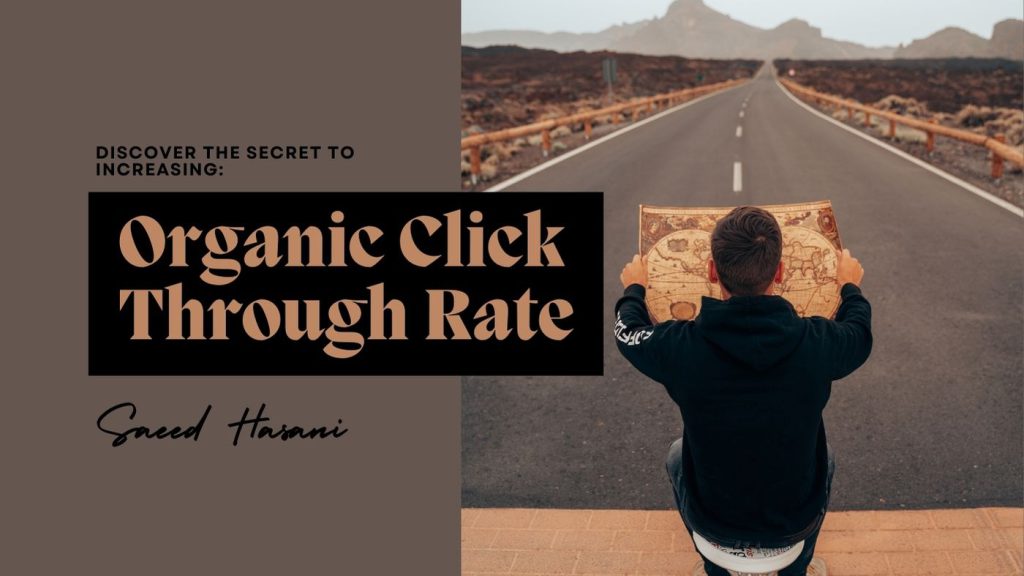
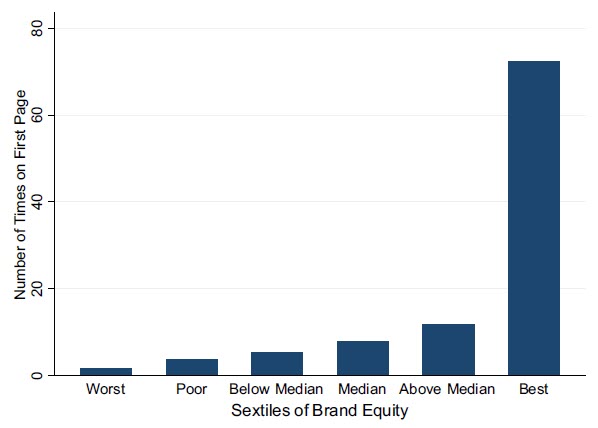
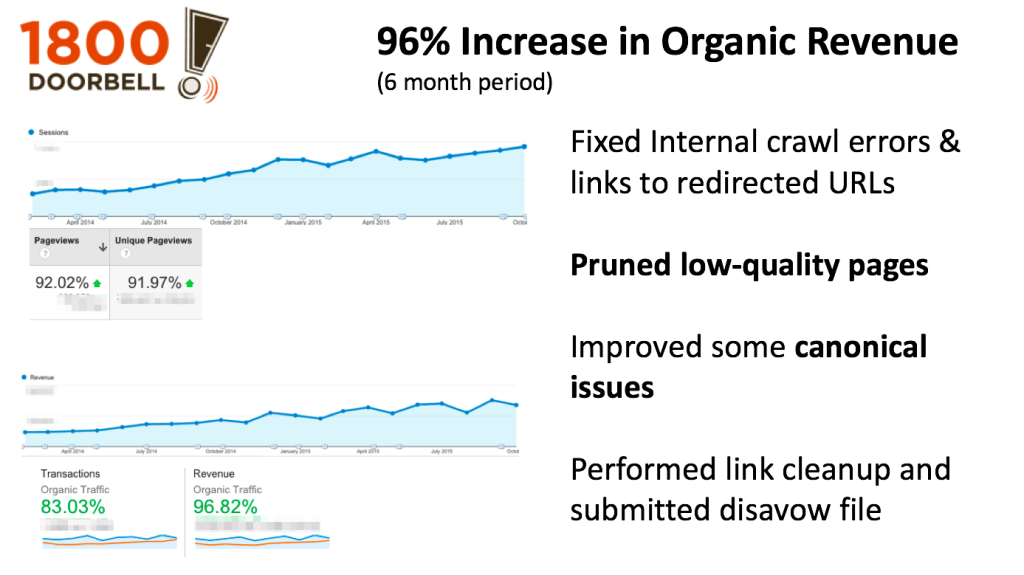
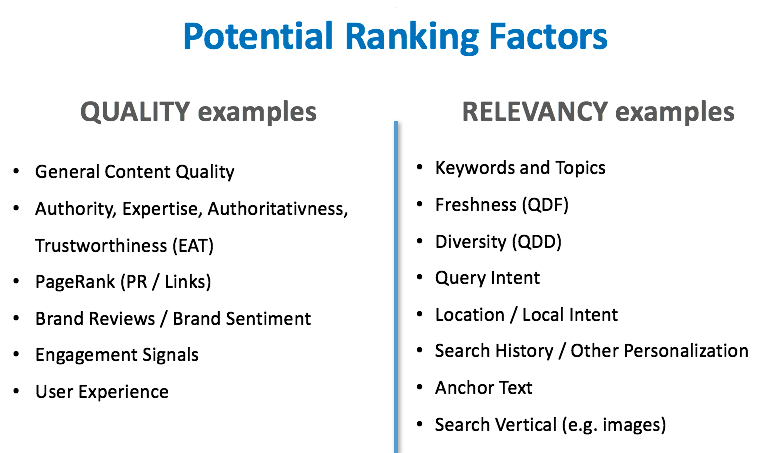





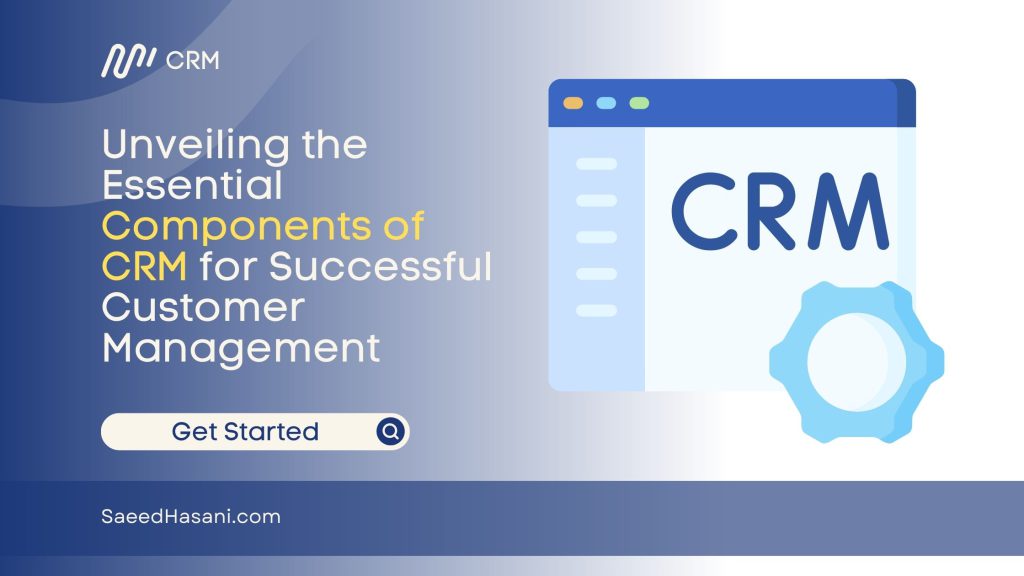

Responses